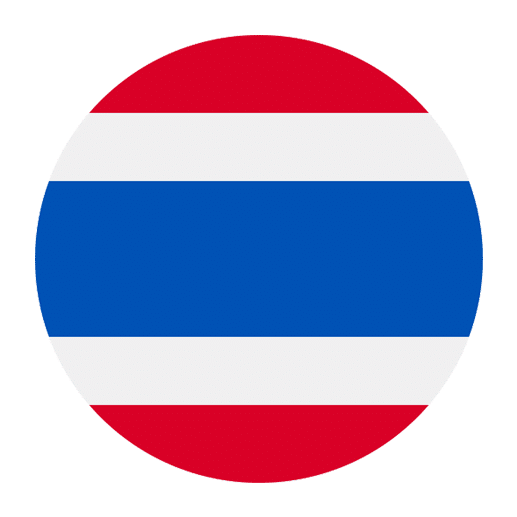Thailand, often referred to as the “Land of Smiles,” is known for its rich culture, stunning landscapes, and warm, hospitable people. One of the most fascinating aspects of Thai culture is the language, which is deeply ingrained with principles of respect and politeness. Understanding polite forms in the Thai language is crucial for anyone who wishes to communicate effectively and respectfully with Thai speakers. This article will delve into the intricacies of these polite forms, offering insights and practical tips for English speakers who are learning Thai.
The Importance of Politeness in Thai Culture
Thai society places a high value on respect, hierarchy, and social harmony. These values are reflected in the language, where politeness is not just a matter of good manners but a fundamental part of communication. In Thai, the way you speak can convey your respect for the person you are talking to, your social status, and even your emotional state.
Politeness in Thai is often expressed through specific words, phrases, and grammatical structures. Understanding these elements can help you navigate social interactions more smoothly and show your respect for Thai culture.
Polite Particles
One of the most distinctive features of the Thai language is the use of polite particles. These are small words added to the end of sentences to make them more polite. The two most common polite particles are “ครับ” (khrap) for males and “ค่ะ” (kha) for females.
ครับ (Khrap)
– Used by males
– Adds a tone of respect and politeness
– Can be used in various contexts, including formal and informal conversations
Example:
– สวัสดีครับ (Sawasdee khrap) – Hello (polite, male speaker)
ค่ะ (Kha)
– Used by females
– Adds a tone of respect and politeness
– Can be used in various contexts, including formal and informal conversations
Example:
– สวัสดีค่ะ (Sawasdee kha) – Hello (polite, female speaker)
These particles are essential for showing respect in Thai conversation. Forgetting to use them can make your speech sound abrupt or even rude.
Honorifics and Titles
In Thai, addressing someone properly is crucial for showing respect. This often involves using honorifics and titles. Unlike in English, where first names are commonly used, Thai people often use titles and honorifics even in casual conversation.
คุณ (Khun)
“คุณ” (khun) is a versatile honorific used before a person’s first name or nickname. It is similar to “Mr.,” “Mrs.,” or “Ms.” in English but is used more broadly.
Example:
– คุณสมชาย (Khun Somchai) – Mr. Somchai
– คุณสมหญิง (Khun Somying) – Ms. Somying
อาจารย์ (Ajarn)
“อาจารย์” (ajarn) is a title used for teachers and professors. It shows a high level of respect and is used both in and out of academic contexts.
Example:
– อาจารย์สมชาย (Ajarn Somchai) – Professor Somchai
พี่ (Pee) and น้อง (Nong)
These terms are used to address people who are older or younger than you, respectively, and can be used with first names or nicknames.
Example:
– พี่สมชาย (Pee Somchai) – Older brother Somchai
– น้องสมชาย (Nong Somchai) – Younger brother Somchai
Polite Pronouns
Thai has a variety of pronouns that can be used to show different levels of respect. Choosing the right pronoun is essential for polite communication.
ผม (Phom) and ดิฉัน (Dichan)
These are formal pronouns for “I.” “ผม” (phom) is used by males, and “ดิฉัน” (dichan) is used by females.
Example:
– ผมชื่อสมชาย (Phom chue Somchai) – My name is Somchai (male speaker)
– ดิฉันชื่อสมหญิง (Dichan chue Somying) – My name is Somying (female speaker)
คุณ (Khun)
As mentioned earlier, “คุณ” (khun) can also be used as a formal pronoun for “you.”
Example:
– คุณชื่ออะไรครับ/ค่ะ (Khun chue arai khrap/kha) – What is your name? (male/female speaker)
เธอ (Ther) and เขา (Khao)
These are less formal pronouns for “you” and “he/she,” respectively. They are often used among friends and peers.
Example:
– เธอทำอะไรอยู่ (Ther tham arai yu) – What are you doing?
– เขาอยู่ที่ไหน (Khao yu thi nai) – Where is he/she?
Polite Phrases and Expressions
Knowing polite phrases and expressions can significantly enhance your ability to communicate respectfully in Thai. Here are some common ones:
ขอโทษ (Kho Thot) – Sorry/Excuse me
– Used to apologize or get someone’s attention
– Adding “ครับ” (khrap) or “ค่ะ” (kha) makes it more polite
Example:
– ขอโทษครับ/ค่ะ (Kho thot khrap/kha) – I’m sorry/Excuse me (male/female speaker)
ขอบคุณ (Khob Khun) – Thank you
– A standard way to express gratitude
– Adding “ครับ” (khrap) or “ค่ะ” (kha) makes it more polite
Example:
– ขอบคุณครับ/ค่ะ (Khob khun khrap/kha) – Thank you (male/female speaker)
ไม่เป็นไร (Mai Pen Rai) – It’s okay/No problem
– A common response to an apology or expression of gratitude
– Can be used in both formal and informal contexts
Example:
– ขอโทษครับ/ค่ะ (Kho thot khrap/kha) – I’m sorry/Excuse me
– ไม่เป็นไรครับ/ค่ะ (Mai pen rai khrap/kha) – It’s okay/No problem (male/female speaker)
Levels of Formality
Thai language has multiple levels of formality, and choosing the right level depends on the context and the relationship between the speakers. Here are some general guidelines:
Formal Language
– Used in official settings, with elders, or with people of higher social status
– Involves the use of formal pronouns, polite particles, and honorifics
Example:
– ดิฉันขออนุญาต (Dichan kho anuyat) – May I have permission (female speaker)
Informal Language
– Used with friends, peers, and close family members
– More relaxed and may omit polite particles and formal pronouns
Example:
– เราจะไปไหน (Rao ja pai nai) – Where are we going?
Body Language and Non-verbal Cues
Politeness in Thai is not limited to spoken language; body language and non-verbal cues also play a significant role. For example:
ไหว้ (Wai)
The “wai” is a traditional Thai greeting involving a slight bow with the hands pressed together in a prayer-like position. The height of your hands and the depth of your bow can indicate the level of respect you are showing.
Smiling
Smiling is an essential part of Thai culture and can help convey friendliness and politeness. A genuine smile can go a long way in making your interactions more pleasant.
Practical Tips for English Speakers
Learning the polite forms in Thai can be challenging, but here are some practical tips to help you master them:
Listen and Observe
Pay attention to how native speakers use polite forms in different contexts. Observe their body language and non-verbal cues as well.
Practice Regularly
Incorporate polite forms into your daily practice. Try speaking with native speakers or practicing with language exchange partners.
Use Language Resources
Utilize language learning resources such as textbooks, online courses, and language apps that focus on Thai politeness.
Be Mindful of Context
Always consider the context and the relationship between you and the person you are speaking to. Adjust your language accordingly.
Don’t Be Afraid to Ask
If you are unsure about which polite form to use, don’t hesitate to ask native speakers for guidance. They will appreciate your effort to learn and show respect for their culture.
Conclusion
Understanding polite forms in the Thai language is essential for anyone looking to communicate effectively and respectfully with Thai speakers. These forms are deeply rooted in Thai culture and reflect the values of respect, hierarchy, and social harmony. By learning and practicing these polite forms, you can enhance your language skills and build stronger, more respectful relationships with Thai speakers. Whether you are traveling to Thailand, doing business, or simply learning the language for personal enrichment, mastering these polite forms will undoubtedly enrich your experience and understanding of this beautiful language and culture.

